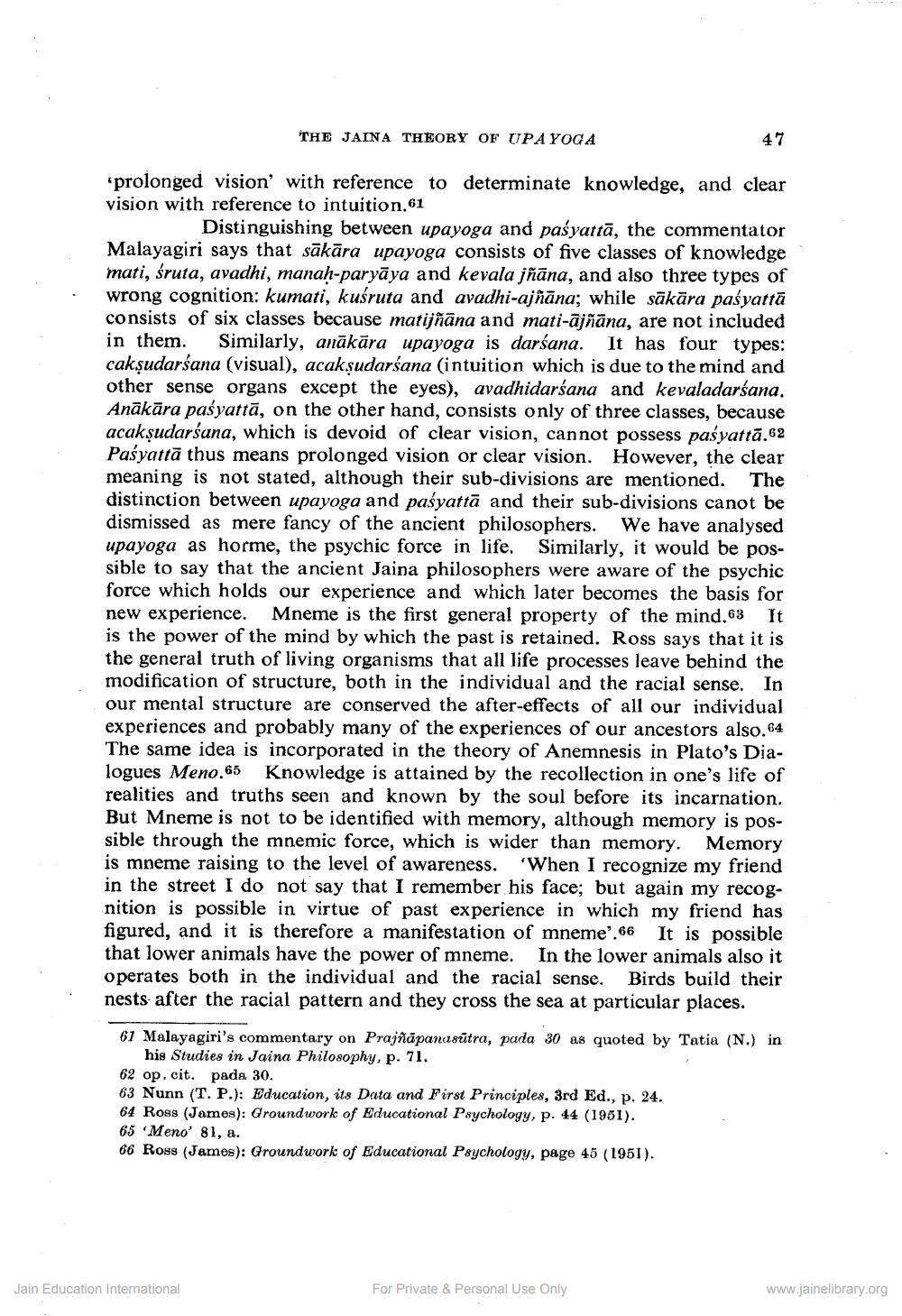________________
THE JAINA THEORY OF UPA YOGA
47
prolonged vision' with reference to determinate knowledge, and clear vision with reference to intuition.61
Distinguishing between upayoga and paśyattā, the commentator Malayagiri says that sākāra upayoga consists of five classes of knowledge mati, śruta, avadhi, manah-paryāya and kevala jñāna, and also three types of wrong cognition: kumati, kuśruta and avadhi-ajñāna; while sākāra paśyattā consists of six classes because matijñāna and mati-ājñāna, are not included in them. Similarly, anākāra upayoga is darśana. It has four types: cakşudarśana (visual), acak sudarśana (intuition which is due to the mind and other sense organs except the eyes), avadhidarśana and kevaladarśana. Anākāra paśyattā, on the other hand, consists only of three classes, because acakşudarsana, which is devoid of clear vision, cannot possess paśyattā.62 Pasyattā thus means prolonged vision or clear vision. However, the clear meaning is not stated, although their sub-divisions are mentioned. The distinction between upayoga and paśyattā and their sub-divisions canot be dismissed as mere fancy of the ancient philosophers. We have analysed upayoga as horme, the psychic force in life. Similarly, it would be possible to say that the ancient Jaina philosophers were aware of the psychic force which holds our experience and which later becomes the basis for new experience. Mneme is the first general property of the mind.63 It is the power of the mind by which the past is retained. Ross says that it is the general truth of living organisms that all life processes leave behind the modification of structure, both in the individual and the racial sense. In our mental structure are conserved the after-effects of all our individual experiences and probably many of the experiences of our ancestors also.64 The same idea is incorporated in the theory of Anemnesis in Plato's Dialogues Meno.65 Knowledge is attained by the recollection in one's life of realities and truths seen and known by the soul before its incarnation. But Mneme is not to be identified with memory, although memory is possible through the mnemic force, which is wider than memory. Memory is meme raising to the level of awareness. When I recognize my friend in the street I do not say that I remember his face; but again my recognition is possible in virtue of past experience in which my friend has figured, and it is therefore a manifestation of mneme'. 66 It is possible that lower animals have the power of mneme. In the lower animals also it operates both in the individual and the racial sense. Birds build their nests after the racial pattern and they cross the sea at particular places.
61 Malayagiri's commentary on Prajñāpanasútra, pada 30 as quoted by Tatia (N.) in
his Studies in Jaina Philosophy, p. 71. 62 op. cit. pada 30. 63 Nunn (T. P.): Education, its Data and First Principles, 3rd Ed., p. 24. 64 Ross (James): Groundwork of Educational Psychology, p. 44 (1951). 65 'Meno 81, a. 66 Ross (James): Groundwork of Educational Psychology, page 45 (1951).
Jain Education International
For Private & Personal Use Only
www.jainelibrary.org




